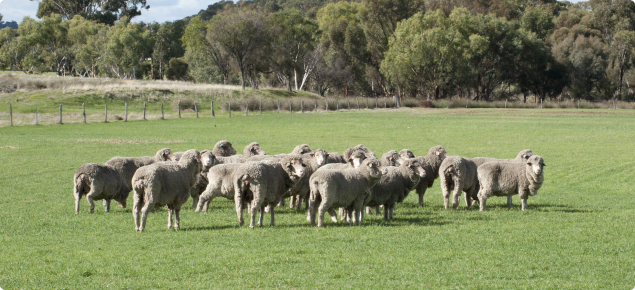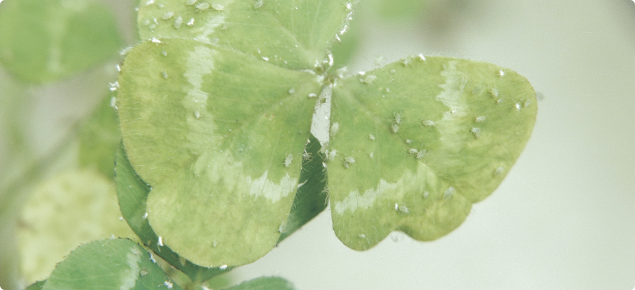In this edition...
Manage aphids to manage sub clover red leaf syndrome
Producers are being advised to check their pastures this winter and spring for aphids that might infect sub clover plants with a virus that causes the red leaf syndrome.
Targeted surveillance under way for Johne’s disease in cattle
A targeted surveillance program is underway to determine if Johne’s disease (JD) in cattle is present in Western Australia.
Producer fined for footrot quarantine breach
A WA sheep producer has been prosecuted for failing to comply with a quarantine notice under the State’s Biosecurity and Agricultural Management Act 2007 following the detection of virulent footrot in his sheep flock.
Case a reminder to prevent ingrown horns
A landholder in the Shire of Toodyay was fined $18 000 in Perth Magistrates Court in May after pleading guilty to four charges of cruelty under the Animal Welfare Act 2002, relating to two rams with ingrown horns.
Aboriginal women driving change in the WA beef industry
Aboriginal cattle stations are expected to reap benefits from current information on grazing and business management, nutrition and ecology presented at the Indigenous Cattlemen’s Workshop and Beef2018 events held recently in Rockhampton.
Manage aphids to manage sub clover red leaf syndrome
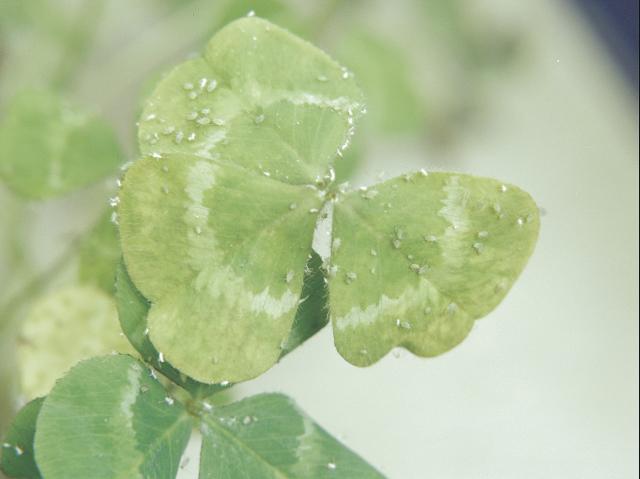
Producers are being advised to check their pastures this winter and spring for aphids that might infect sub clover plants with a virus that causes the red leaf syndrome.
Management options include the use of insecticides and sowing alternative pasture species.
There has been considerable concern among livestock producers regarding recent outbreaks of subterranean clover red leaf syndrome. Symptoms include red leaves, stunted plants and even premature plant death.
The Department of Primary Industries and Regional Development (DPIRD) investigated the outbreak in 2017 finding that of the subterranean clover plants tested, 80% with obvious red leaves were infected with Soybean dwarf virus (SbDV) compared to just 2% without obvious symptoms.
SbDV is spread by aphids persistently (once acquired the aphid has it for life) and repeat infection can occur.
Its incidence in a subterranean clover pasture will vary from season to season depending on the abundance and distribution of alternative plant hosts and aphid vector species.
The symptoms can occur as isolated patches in paddocks, to whole paddocks being affected. However, the presence of red-leaves does not necessarily indicate viruses are present.
SbDV is not seed-borne and therefore is not present in the seed bank or in commercial seed stocks.
For more detailed information visit the subterranean clover red leaf syndrome on the department’s website.
For more information contact Paul Sanford, DPIRD Senior Research Officer, Albany on +61(0)8 9892 8475 or Kevin Foster, UWA Pasture Researcher, Nedlands on +61 (0)8 6488 2220.
Targeted surveillance underway for Johne’s disease in WA cattle
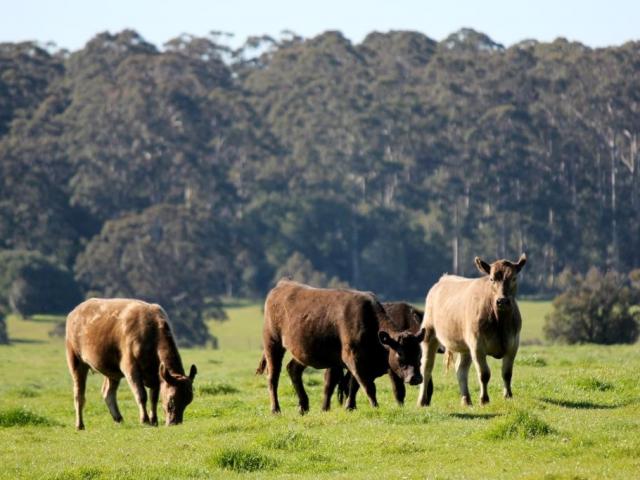
A targeted surveillance program is underway to determine if Johne’s disease (JD) in cattle is present in Western Australia.
The surveillance testing is being carried out by the Department of Primary Industries and Regional Development (DPIRD) on behalf of the Cattle Industry Funding Scheme (CIFS), which is funding the program.
The program is designed to scientifically determine the JD status of beef and dairy herds across the state and is needed in order to inform WA industry’s decision-making on whether to continue to regulate JD in cattle in WA in the future, including whether to maintain border controls.
Under the risk-based surveillance program, WA properties were invited to undertake testing on the basis of having imported cattle since 2005 from the eastern states where the prevalence of JD in cattle is higher than in WA.
To date, DPIRD has carried out sampling on 76 of 100 targeted properties.
Testing has been completed for 62 properties, and all have received negative results for JD in their cattle herds.
The new national arrangements for JD categorised all forms of JD together, so WA is no longer considered ‘free’ of JD because ovine Johne’s disease (OJD – or ‘sheep strain’) is present in the state’s sheep population.
Testing under the targeted surveillance program has found no evidence of either sheep (S)-strain or cattle (C)-strain of JD in the 62 WA cattle herds where test results have been received to date.
An additional 77 WA cattle properties have completed voluntary testing for their Johne’s Beef Assurance Score (J-BAS) and have also tested negative for JD.
The Cattle Industry Funding Scheme will keep industry informed about the progress of the surveillance program and consult with industry if any significant detections occurred prior to deciding on a course of action.
The committee and department have issued a joint industry update with further details about the surveillance program.
| Commencement date | September 2017 |
| Number of properties sampled to date | 76 |
| Number of results received | 62 |
| Number of properties with C- or S-strain detected in cattle herd | 0 |
| Number of properties still to be sampled | 24 |
| Expected date for testing completion | Late 2018 |
Producer fined for footrot quarantine breach
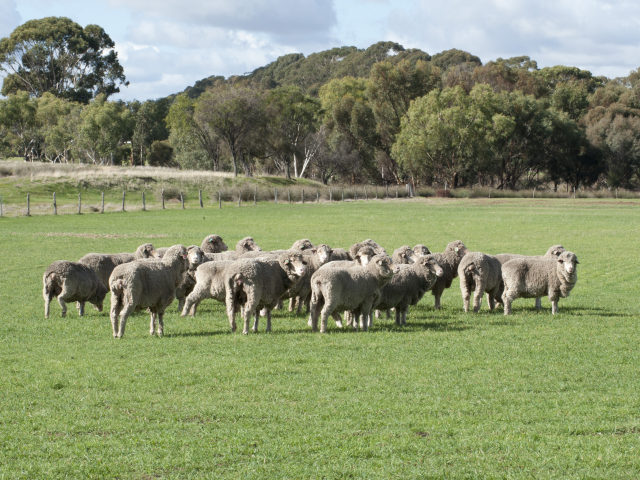
A WA sheep producer has been prosecuted for failing to comply with a quarantine notice under the State’s Biosecurity and Agricultural Management Act 2007 following the detection of virulent footrot in his sheep flock.
The Denmark Shire producer pleaded guilty to five charges of failing to take adequate precautions to prevent his sheep leaving the quarantined property and potentially spreading footrot to neighbouring properties.
The producer was fined $3000 and ordered to pay court costs of $359.
The Department of Primary Industries and Regional Development carries out a footrot control program for the WA sheep industry to limit the financial and welfare impacts of virulent footrot.
Virulent footrot can spread when infected sheep come into contact with non-infected sheep.
Footrot bacteria are able to transfer from an infected sheep’s foot to soil and faeces, and under the right conditions, onto the feet of non-infected sheep in the same paddocks.
Sheep flocks with virulent footrot are placed under quarantine to restrict the movement of sheep from these properties until the infection has been eradicated.
The quarantine notice also directs that fence and gate security must be maintained to ensure sheep remain within the quarantined property.
In this case, sheep had strayed to neighbouring properties on several occasions between 2016 and 2017, and the producer had not taken sufficient action to prevent this.
The WA sheep industry invests significant funding to control the spread of virulent footrot across the State, and producers are required to take the necessary steps to prevent infected sheep straying off their property.
Virulent footrot is a bacterial infection of the inter-digital skin on sheep’s feet that causes lameness and productivity losses.
For more information about the Sheep and Goat Industry Funding Scheme’s Footrot Control Program, visit the department’s website and search footrot.
For more information contact Dr Jenny Cotter, Veterinary Officer, Albany on +61 (0)8 9892 8421.
A reminder to prevent ingrown horns
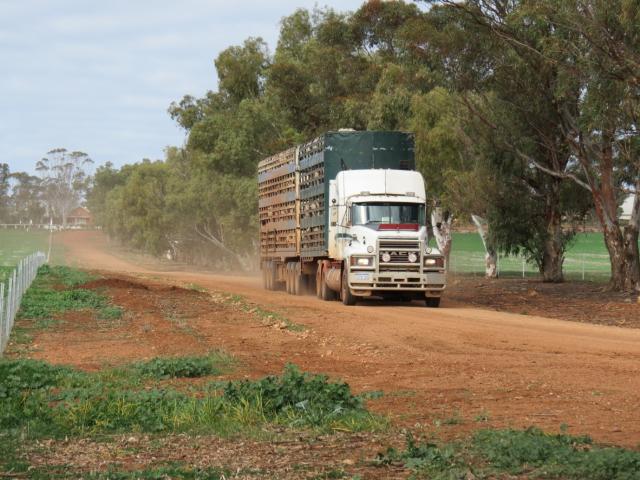
A landholder in the Shire of Toodyay was fined $18 000 in Perth Magistrates Court in May after pleading guilty to four charges of cruelty under the Animal Welfare Act 2002, relating to two rams with ingrown horns.
A court order was also imposed, prohibiting the landholder from being in charge of livestock until 2021 unless certain conditions are met.
These include restricting the number of livestock to be kept and reporting each month to the Department of Primary Industries and Regional Development on the animals in his care.
For each animal, the landholder was convicted of failing to take reasonable steps to alleviate harm, and transporting the sheep in a way which caused, or was likely to cause, unnecessary harm. He was ordered to pay legal costs of $12 367.
The convictions relate to events in December 2014, when a department inspector noted the injured rams during an inspection at the Muchea Livestock Centre.
The ingrown horn had penetrated the eye of one ram, and had caused a 2cm skull depression in the other animal.
The conviction sends a clear message that anyone keeping animals is required to continually monitor them to identify any potential animal welfare issues.
It is reasonable to expect that ingrown horns such as these should have been identified and treated in accordance with the Code of Practice for Sheep in Western Australia.
In addition, all animals to be transported should be inspected to ensure they are fit to travel as transporting unwell or injured animals is likely to cause additional, unnecessary harm.
For more information about animal welfare, visit the department’s website.
To report suspected cruelty to animals, contact the RSPCA on +61 (0)8 9209 9300 or 1300 278 3589 (emergencies only).
Aboriginal women driving change in the WA beef industry
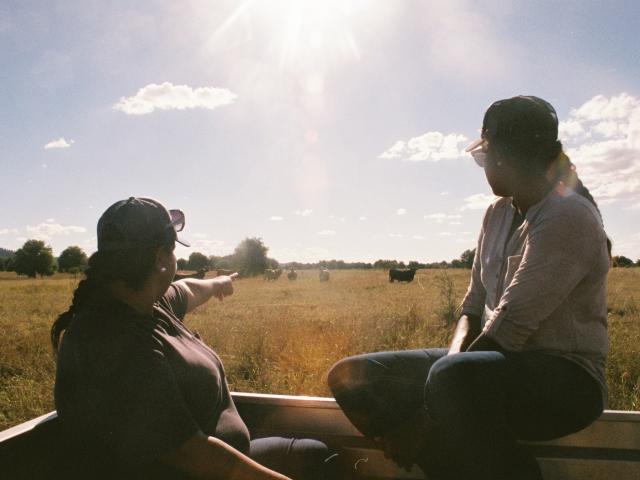
Aboriginal cattle stations are expected to reap benefits from current information on grazing and business management, nutrition and ecology presented at the Indigenous Cattlemen’s Workshop and Beef2018 events held recently in Rockhampton.
The Department of Primary Industries and Regional Development supported female Aboriginal pastoralists to attend the events for the second year to follow-up on their 2017 learnings.
Darrylin Gordon, of Lamboo Station in the Kimberley, is the 2018 WA Rural Woman of the Year recipient for her training and empowerment program at Lamboo Station.
Lexi Mourambine represents Yallalie Farm in the mid-west - the only Aboriginal-owned cattle backgrounding business in WA.
Aboriginal Business Development officer Daisy Goodwin accompanied the women to the event as part of ongoing support to Aboriginal pastoralists’ development and capacity building in the northern beef industry.
The five-day learning opportunity helped deliver the business and leadership development roles of the Aboriginal women.
Early classroom sessions at the workshop focused on business management training, grazing management, and principles of cattle reproduction, followed by a site visit where participants undertook soil assessments.
A Central Queensland University site visit focused on innovations and technologies, such as walk-over scales and GPS ear-tags, which allow cattle behaviour and movements to be tracked, resulting in significant management benefits to industry.
Attendance at the workshop cemented varied key learnings for the women, who are based on different landscapes and climates, and operate dissimilar pastoral businesses, and allowed them to come away with key learnings they could take back and implement at home.
Darrylin hopes to go back to Lamboo and plan which paddocks need rest by calculating stock days per hectare. She learnt a practical way to work out how much dry matter is available, which involves filling a box full of grass and weighing it, drying it out for a few weeks and weighing it again for the dry weight.
Lexi also plans to figure out the carrying capacity of her land using stock days per hectare and a permanent whiteboard with a grazing chart to reference when in the yards.
She learnt she could then see how different carrying capacities effect the land by conducting soil assessments. This involves assessing soil organic matter, root direction, compaction, biodiversity, micro-organisms and water retention.
Both women found the business management session particularly valuable, especially advice to separate funding external to the business from profit and loss spreadsheets to gauge how well the business is doing, stand-alone.
The women learnt how to create multiple business tools including stock flows, balance sheets and profit and loss statements.
A key takeaway was that the balance sheet is a ‘picture’ of the farm’s position at a particular time, whereas stock flow and profit and loss figures provide a ‘video’ of success over time.
Daisy hopes that key grazing principles and management lessons learnt from the Indigenous Cattlemen’s Workshop and Beef2018 conference and opportunities arising can be incorporated into future regional training events.
For more information contact Daisy Goodwin, Development Officer – Aboriginal Business Development, Broome on +61 (0)8 9194 1488.

